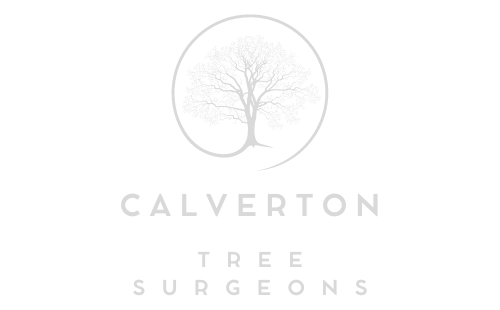How to Prune Trees to Protect Roof Tiles
Overhanging branches may provide shade and character to a garden, but when left unmanaged, they can pose a serious risk to your roof. Falling branches, constant abrasion, and debris build-up are all common causes of roof tile damage, particularly in properties surrounded by mature trees. At Calverton Tree Surgeons, we work with homeowners and property managers across Calverton, Nottingham to help maintain healthy trees while preventing avoidable damage to roofing structures.
Understanding how to properly prune trees is essential for protecting your property — especially the roof, which is often one of the most expensive elements to repair.
Why Trees Pose a Risk to Roof Tiles
Before delving into how to prune effectively, it’s important to understand why tree growth needs to be carefully managed near buildings:
- Overhanging branches can rub against tiles and gutters during windy weather, loosening or cracking the roof covering over time.
- Falling limbs or twigs can directly impact the roof surface, especially during storms or after heavy snowfall.
- Leaf and debris accumulation in gutters and valleys can cause water pooling and long-term moisture damage.
- Moss and algae thrive in shaded, damp areas created by low-hanging foliage, weakening the roof’s protective properties.
Routine pruning not only helps to eliminate these hazards but also promotes the long-term health of your trees.
Best Practices for Pruning Trees Near Roofs
To avoid tile damage and maintain both tree structure and roof integrity, the following pruning techniques should be followed:
1. Maintain Safe Clearance from Roofline
Aim to keep at least 1.5 to 2 metres of clearance between tree branches and the roof. This space minimises the risk of branches scraping or dropping debris directly onto tiles.
- Use reduction pruning to shorten limbs without harming the tree’s form
- Ensure clearance is maintained year-round, especially before winter storms
2. Remove Dead or Diseased Branches
Dead wood is more likely to fall without warning, particularly in high winds. Regular inspections and removal reduce this risk.
- Target brittle, cracked, or leafless limbs
- Dispose of pruned material responsibly to prevent decay build-up on site
3. Thin the Canopy to Reduce Wind Load
A dense canopy can catch wind like a sail, increasing the chance of branch breakage and tree failure. Selective thinning reduces wind resistance while maintaining the tree’s shape.
- Focus on internal branches that cross or crowd
- Avoid excessive removal, which can stress the tree
4. Use Proper Pruning Techniques
Incorrect pruning can do more harm than good, leading to decay, disease, or uneven regrowth. Avoid cutting too close to the trunk or leaving long stubs.
- Make clean, angled cuts just outside the branch collar
- Use sharp, sterilised tools to reduce infection risk
- Avoid topping or excessive crown reduction unless necessary
5. Monitor Seasonal Timing
The best time for pruning varies by species and objective. In general:
- Late winter to early spring is ideal for most deciduous trees
- Summer pruning can slow growth or remove weight after storms
- Avoid heavy pruning during autumn, as it may weaken the tree ahead of winter
At Calverton Tree Surgeons, we advise on the best timing and method based on the type, size, and health of the tree — along with its proximity to the roof.
When to Call in a Professional
Tree pruning near roofs involves not only arboricultural knowledge but also the ability to work safely at height and close to buildings. Professional tree surgeons are equipped with the training and tools to carry out the job efficiently without risking damage to the roof or injury to themselves.
Consider hiring a professional if:
- The tree is tall or has branches overhanging roof tiles
- You’re unsure which limbs are safe to remove
- Access is limited or requires climbing
- You’ve previously experienced storm damage to the roof
At Calverton Tree Surgeons, we provide comprehensive tree pruning services across Calverton, Nottingham, with an emphasis on safety, structural health, and property protection.
Additional Tips to Protect Roof Tiles
Pruning is just one part of a broader maintenance approach to safeguarding your roof:
- Schedule annual roof and gutter inspections
- Remove leaf and moss build-up regularly
- Repair cracked or slipped tiles promptly
- Install gutter guards to reduce clogging
Our team can work in conjunction with local roofing professionals to ensure your property remains protected from both above and below.
Conclusion
Unmanaged tree growth can lead to significant and costly roof damage if not properly addressed. By pruning trees with care and consideration, you not only protect your tiles but also preserve the health and appearance of your landscape. Whether it’s a one-off job or part of a seasonal maintenance plan, expert tree care plays a vital role in preventing property damage.
If you have trees growing near your home in Calverton, Nottingham, contact Calverton Tree Surgeons for professional advice and safe, effective pruning services. We’re here to help you keep your trees healthy and your roof protected, all year round.
Call us on: 0115 647 1154
Click here to find out more about Calverton Tree Surgeons
Click here to complete our contact form and see how we can help with your tree needs.

